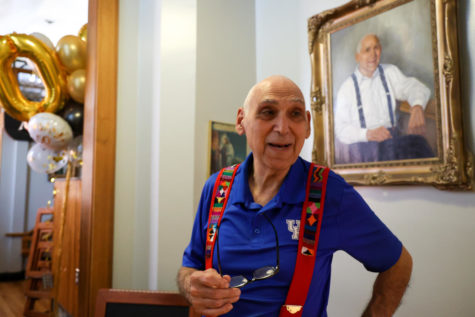Safety plans at UK responsibility of each college
February 25, 2010
With the shootings at the University of Alabama less than two weeks ago and the recent questioning of gun possession laws on UK’s campus, some may be wondering what to do in the event of an on-campus emergency — whether it be an armed gunman or a fire.
Each UK college department must have a Building Emergency Action Plan to provide for its students, faculty, staff and visitors in the event of an emergency, and the individual departments or groups of departments make their own plans.
The Kernel received a spreadsheet through an open records request listing the status of all BEAPs for UK-owned properties.
The spreadsheet lists about 570 different university-owned and insured properties, but not all of these buildings require their own plan because of factors such as building size and frequency of people in them, said Emergency Management Director Christy Giles.
About 21 buildings were listed as having completed plans submitted to the Emergency Management Office, about 96 buildings were listed as having submitted a draft and about 44 were listed as having a draft in progress.
Giles said every department knows it has to complete a plan, but the plans are time consuming, which is why some are not done yet. Departments that already had their own internal safety plans were able to submit a formal plan quicker because they just rewrote them to fit the BEAP template, she said.
Out of the properties listed on the spreadsheet, some do not follow university emergency plans. University hospital buildings, buildings owned by Bluegrass Community and Technical College, Commonwealth Stadium and Rupp Arena all follow different emergency plans.
Giles said buildings such as separate farming facilities where people do not frequent all day, everyday, do not require their own emergency plan, but they have to be listed in the spreadsheet because UK still has to insure those facilities.
“A big chunk of these buildings are small buildings in the barns, but because the university owns and insures them, they have to have building numbers,” she said.
Other buildings that do not require their own specific emergency plans include the Greg Page Apartment Complex and Cooperstown Apartments, because they are looked at as personal apartments, Giles said. Because those buildings are rented out, versus buildings such as residence halls, it is up to individual residents to do their own personal planning, she said.
The BEAP is supposed to be tested annually at a time each department chooses. These tests may involve emergency plan leaders going through specific scenarios or doing a routine fire alarm test and evacuation, Giles said.
“We will evolve that training as plans get implemented and people get accustomed to training and exercising those plans on an annual basis,” she said.
Giles said the Emergency Management Office and college departments aim to involve students in these tests too.
Under the “workplace violence” section of the plan, it instructs those aware of gunfire to take refuge in a room that can be locked and with limited visibility to those outside, secure the door and hide under a desk or closet or in a corner. Once the situation is solved, a UK officer or university official will unlock the door to let people inside know everything is okay.
Other sections of the plan include what to do in the event of a fire, natural disaster, bomb threat and attempted threat.
Students can visit the Emergency Management Web site, (www.uky.edu/EM), for more information on what to do in different emergencies and can look at Campus Emergency Action Guide posters located in all university classrooms and labs.
Giles said if any student notices a classroom or lab missing one of these posters, he or she should contact the Emergency Management Office to let employees know.


























































































































































